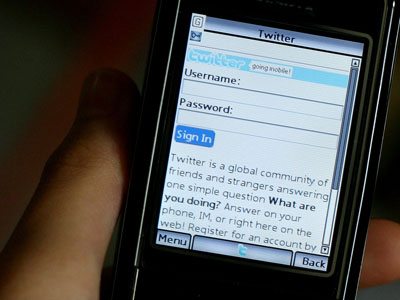Social media is changing how people respond to natural disasters, but how about warning them of a coming catastrophe, especially in developing countries?
Toretter, a new earthquake-reporting system developed by Japanese scientists, uses Twitter to provide a quick and affordable way of informing the public that a tremor is on its way. The system apparently works faster than Japan’s own official earthquake warning channels and could even be adapted to send out alerts pertaining to other natural disasters, the Science and Development Network reported on Monday.
Between 2009 and 2011, the scientists monitored tweets pertaining to more than 1,000 quakes. Toretter monitors tweets from users that are reporting possible tremors and were able to detect more than 90 percent, but there were also many false alarms. The system was then improved until it was able to detect at least 80 percent of strong earthquakes with a 75 percent reliability record.
The system uses computer-based semantic analysis to classify tweets based on keywords, such as ‘shaking’ or ‘earthquake’ and their context. Toretter uses computer-based semantic analysis to classify tweets based on keywords such as ‘shaking’ or ‘earthquake’, and their context, then compares that information to the time and location of the tweets, and finally sends an email alert within an average of two minutes, four minutes faster than the Japan Meteorological Agency.
According to its makers, Toretter is ideal for many developing countries that are prone to natural disasters, as the low-cost system can be adapted to also detect typhoons, tornados, tsunamis and even heavy traffic.
Indonesia, for instance, has a high incidence of catastrophes and at the same time is the fastest-growing nation in the world in terms of Facebook and Twitter users.
Toretter, a new earthquake-reporting system developed by Japanese scientists, uses Twitter to provide a quick and affordable way of informing the public that a tremor is on its way. The system apparently works faster than Japan’s own official earthquake warning channels and could even be adapted to send out alerts pertaining to other natural disasters, the Science and Development Network reported on Monday.
Between 2009 and 2011, the scientists monitored tweets pertaining to more than 1,000 quakes. Toretter monitors tweets from users that are reporting possible tremors and were able to detect more than 90 percent, but there were also many false alarms. The system was then improved until it was able to detect at least 80 percent of strong earthquakes with a 75 percent reliability record.
The system uses computer-based semantic analysis to classify tweets based on keywords, such as ‘shaking’ or ‘earthquake’ and their context. Toretter uses computer-based semantic analysis to classify tweets based on keywords such as ‘shaking’ or ‘earthquake’, and their context, then compares that information to the time and location of the tweets, and finally sends an email alert within an average of two minutes, four minutes faster than the Japan Meteorological Agency.
According to its makers, Toretter is ideal for many developing countries that are prone to natural disasters, as the low-cost system can be adapted to also detect typhoons, tornados, tsunamis and even heavy traffic.
Indonesia, for instance, has a high incidence of catastrophes and at the same time is the fastest-growing nation in the world in terms of Facebook and Twitter users.

No comments:
New comments are not allowed.